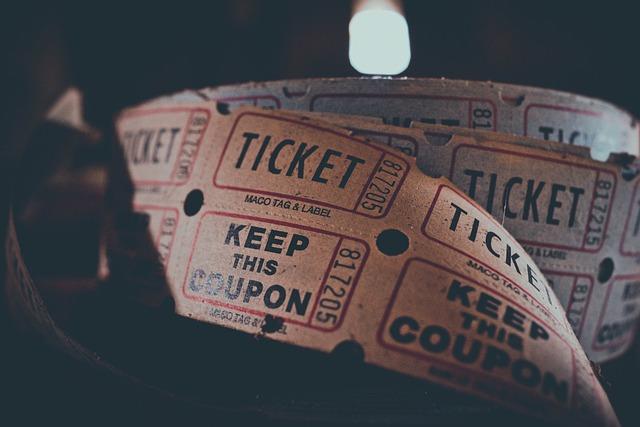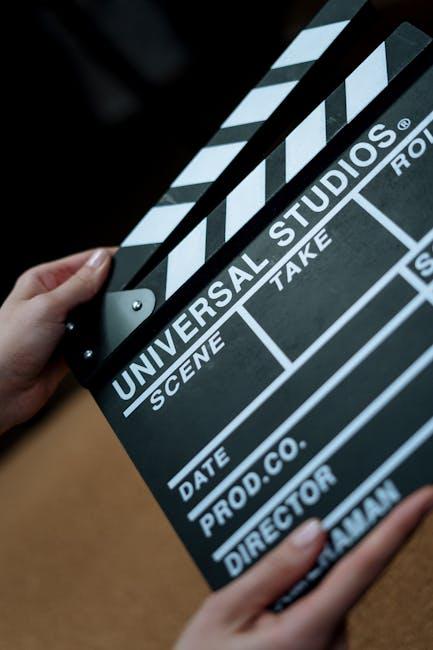Title: Illuminating the Silver Screen: Analyzing the Legacy of Classic Hollywood Films in Modern Pop Culture
Introduction:
In the ever-evolving landscape of modern pop culture, the shimmering allure of classic Hollywood films continues to cast a long and influential shadow. These cinematic masterpieces, born in an era defined by innovation and glamour, have transcended their temporal origins to become enduring cultural touchstones. As we delve into the intricate tapestry of their legacy, it becomes clear that the narratives, aesthetics, and archetypes crafted during Hollywood’s golden age persistently echo through contemporary media. This article embarks on an analytical journey to explore how these iconic films have shaped, and continue to shape, the cultural zeitgeist—illuminating the ways in which they inform modern storytelling, fashion, and societal norms. By dissecting the lasting impact of classic Hollywood, we gain a deeper understanding of the timeless interplay between past and present in the realm of popular culture.
Enduring Influence: Classic Hollywoods Imprint on Modern Cinema
Classic Hollywood, with its iconic storytelling and charismatic stars, has left an indelible mark on modern cinema. The golden age’s emphasis on narrative structure and character development continues to resonate in today’s films. Contemporary directors often draw inspiration from the visual style and thematic depth of this era, creating works that echo the sophistication and elegance of their predecessors. The influence is evident in the revival of genres like film noir and musicals, where filmmakers pay homage to the masters of yesteryears.
- Visual Aesthetics: The striking use of lighting and shadows in classic films is mirrored in modern cinematography.
- Character Archetypes: Timeless characters, from the anti-hero to the femme fatale, remain staples in today’s storytelling.
- Narrative Techniques: The classic three-act structure and plot twists continue to captivate audiences worldwide.
By understanding and integrating these elements, contemporary filmmakers not only pay tribute to the past but also enrich the cinematic landscape, ensuring that the legacy of classic Hollywood endures.

Cinematic Techniques: Bridging Old Hollywood and New Narratives
In the ever-evolving world of cinema, the legacy of classic Hollywood films is profoundly evident in the way modern narratives are crafted. Cinematic techniques from the golden age, such as the meticulous use of lighting and innovative camera angles, continue to influence contemporary filmmakers. These techniques are not just relics of the past but have become foundational elements in storytelling today.
- Lighting: The chiaroscuro contrasts of film noir have found their way into modern thrillers and dramas, enhancing mood and tension.
- Camera Angles: The sweeping crane shots and dynamic tracking shots pioneered by early auteurs are now staples in blockbuster action sequences.
- Montage: Borrowed from Soviet filmmakers but popularized in Hollywood, montages are used in everything from training sequences to emotional climaxes.
Modern directors blend these classic techniques with digital innovation, creating a bridge between the past and present. This fusion not only pays homage to the pioneers of the craft but also pushes the boundaries of what cinema can achieve, ensuring that the art form remains vibrant and relevant.

Cultural Reflections: Classic Films Shaping Contemporary Themes
The influence of classic Hollywood films on contemporary pop culture is both profound and multifaceted. These cinematic masterpieces have become cultural touchstones, providing a rich tapestry of themes and narratives that continue to resonate today. Modern filmmakers frequently draw inspiration from these classics, weaving their timeless motifs into new stories. For instance, the suspense and intrigue of Alfred Hitchcock’s films can be seen in the psychological thrillers of today, while the sweeping romances of the Golden Age have set the stage for countless modern love stories. The enduring power of these films lies in their ability to explore universal themes such as love, identity, and morality, which remain relevant across generations.
Several key elements from these classic films have left an indelible mark on contemporary storytelling:
- Iconic Characters: Archetypes established by classic films, like the anti-hero or the femme fatale, continue to be reimagined in modern narratives.
- Visual Style: The distinctive cinematography of noir films, with its stark contrasts and shadows, influences the aesthetic of today’s dramas and thrillers.
- Storytelling Techniques: Non-linear storytelling and unreliable narrators, popularized by early cinema, are now staples in complex narratives across various media.
By examining these enduring elements, we can better understand how classic films shape the stories that captivate audiences today, reflecting a legacy that transcends time.

Strategic Revivals: Recommendations for Honoring Hollywoods Golden Age
Reviving the allure of Hollywood’s Golden Age requires more than mere nostalgia; it demands a strategic approach that honors its rich legacy while resonating with today’s audiences. By integrating classic storytelling techniques with modern sensibilities, filmmakers can create a bridge between the past and present. Key recommendations include:
- Reimagining Iconic Stories: Update classic narratives with contemporary themes and diverse casting to reflect today’s society while maintaining the original’s essence.
- Digital Restoration and Streaming: Invest in high-quality restorations of classic films and make them accessible on popular streaming platforms to reach a broader audience.
- Incorporating Classic Aesthetics: Use visual and musical elements reminiscent of the era to evoke nostalgia while engaging new viewers.
- Educational Initiatives: Develop programs that educate audiences about the cultural and historical significance of classic films, fostering appreciation and understanding.
These strategies not only preserve the timeless allure of classic Hollywood but also ensure its continued relevance in a rapidly evolving media landscape.

